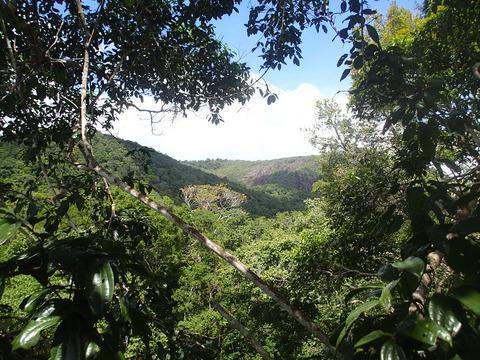Our official English website, www.x-mol.net, welcomes your feedback! (Note: you will need to create a separate account there.)
Leaf drought tolerance cannot be inferred from classic leaf traits in a tropical rainforest
Journal of Ecology ( IF 5.5 ) Pub Date : 2019-12-26 , DOI: 10.1111/1365-2745.13321 Isabelle Maréchaux 1, 2, 3 , Laurent Saint‐André 4 , Megan K. Bartlett 5, 6 , Lawren Sack 6 , Jérôme Chave 2
中文翻译:

无法从热带雨林中的经典叶片性状推断出叶片的耐旱性
更新日期:2019-12-26
Journal of Ecology ( IF 5.5 ) Pub Date : 2019-12-26 , DOI: 10.1111/1365-2745.13321 Isabelle Maréchaux 1, 2, 3 , Laurent Saint‐André 4 , Megan K. Bartlett 5, 6 , Lawren Sack 6 , Jérôme Chave 2
Affiliation

|
- Plants are enormously diverse in their traits and ecological adaptation, even within given ecosystems, such as tropical rainforests. Accounting for this diversity in vegetation models poses serious challenges. Global plant functional trait databases have highlighted general trait correlations across species that have considerably advanced this research program. However, it remains unclear whether trait correlations found globally hold within communities, and whether they extend to drought tolerance traits.
- For 134 individual plants spanning a range of sizes and life forms (tree, liana, understorey species) within an Amazonian forest, we measured leaf drought tolerance (leaf water potential at turgor loss point, πtlp), together with 17 leaf traits related to various functions, including leaf economics traits and nutrient composition (leaf mass per area, LMA; and concentrations of C, N, P, K, Ca and Mg per leaf mass and area), leaf area, water‐use efficiency (carbon isotope ratio), and time‐integrated stomatal conductance and carbon assimilation rate per leaf mass and area. We tested trait coordination and the ability to estimate πtlp from the other traits through model selection. Performance and transferability of the best predictive model were assessed through cross‐validation.
- Here πtlp was positively correlated with leaf area, and with N, P and K concentrations per leaf mass, but not with LMA or any other studied trait. Five axes were needed to account for >80% of trait variation, but only three of them explained more variance than expected at random. The best model explained only 30% of the variation in πtlp, and out‐sample predictive performance was variable across life forms or canopy strata, suggesting a limited transferability of the model.
- Synthesis. We found a weak correlation among leaf drought tolerance and other leaf traits within a forest community. We conclude that higher trait dimensionality than assumed under the leaf economics spectrum may operate among leaves within plant communities, with important implications for species coexistence and responses to changing environmental conditions, and also for the representation of community diversity in vegetation models.
中文翻译:

无法从热带雨林中的经典叶片性状推断出叶片的耐旱性
- 甚至在特定的生态系统(例如热带雨林)中,植物的性状和生态适应性也千差万别。考虑到植被模型的这种多样性提出了严峻的挑战。全球植物功能性状数据库强调了跨物种的一般性状相关性,从而大大促进了该研究计划。但是,目前尚不清楚社区内是否普遍存在性状相关性,以及是否延伸到耐旱性状。
- 对于134的个体植物的亚马逊森林中跨越多种尺寸和生命形式(树,藤本植物,林下种),我们测量的叶耐旱性(在膨压损点水势,π TLP 17个与叶片性状),一起各种功能,包括叶片经济性状和营养成分(每面积叶片质量,LMA;每叶片质量和面积中C,N,P,K,Ca和Mg的浓度),叶片面积,水分利用效率(碳同位素比) ),以及时间积分气孔导度和每叶质量和面积的碳同化率。我们测试的性状的协调和估算能力π TLP从其他特征中选择模型。通过交叉验证评估了最佳预测模型的性能和可移植性。
- 这里π TLP呈正叶面积相关,与每叶重N,P和K的浓度,但不与LMA或任何其他研究的性状。需要五个轴来解决> 80%的性状变异,但是其中只有三个轴解释了比随机预期更多的变化。最佳模型中说明只有30%的变化的π TLP,和出样本预测性能是跨越生命形式或天篷地层变量,表明了模型的一个有限的转印能力。
- 综合。我们发现森林群落内叶片耐旱性与其他叶片性状之间的相关性较弱。我们得出的结论是,在植物群落内的叶片之间可能会发生比叶片经济学范畴更高的特征维数,这对于物种共存和对不断变化的环境条件的响应以及植被模型中群落多样性的表示都具有重要意义。


























 京公网安备 11010802027423号
京公网安备 11010802027423号